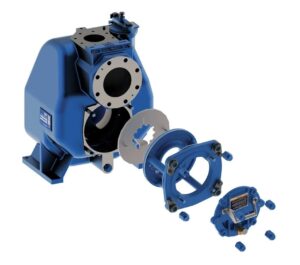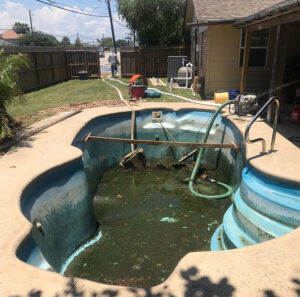In the realm of pumping solutions, Gorman-Rupp stands as a pioneering force, renowned for its unparalleled quality, reliability, and innovation in the industry. For decades, Gorman-Rupp has been a trusted name, delivering cutting-edge pump technologies and parts that cater to diverse industrial, municipal, and commercial needs. Among the myriad of options available, why should one choose Gorman-Rupp pump parts? This comprehensive guide aims to delve into the myriad benefits and advantages that make Gorman-Rupp a preferred choice in the world of pumping systems.
Introduction to Gorman-Rupp Pump Parts
Gorman-Rupp Company, established in 1933, has carved an indelible mark in the pump manufacturing landscape. Their commitment to excellence, coupled with a relentless pursuit of innovation, has positioned them as a global leader in pump technology. The range of Gorman-Rupp pump parts encompasses pumps, pump accessories, and replacement parts that adhere to the highest standards of quality and performance.
Unparalleled Quality and Reliability
One of the primary reasons to opt for Gorman-Rupp pump parts is the uncompromising emphasis on quality. Gorman-Rupp products undergo rigorous testing and adhere to stringent quality control measures, ensuring durability and reliability in diverse operational environments. The use of premium materials and state-of-the-art manufacturing processes guarantees a level of quality that surpasses industry benchmarks, thereby minimizing downtime and maintenance costs.
Diverse Range of Applications
Gorman-Rupp pump parts cater to a wide spectrum of applications across various industries. From water and wastewater management to mining, construction, agriculture, and oil & gas sectors, Gorman-Rupp offers specialized solutions tailored to meet specific operational needs. Their comprehensive range includes self-priming pumps, submersible pumps, trash pumps, centrifugal pumps, and more, designed to handle different fluids, viscosities, and solids with utmost efficiency.
Innovative Technology and Engineering Excellence
The hallmark of Gorman-Rupp’s success lies in its relentless pursuit of innovation and engineering excellence. Their dedicated Research and Development teams continuously strive to enhance pump technologies, introducing cutting-edge features that optimize performance, energy efficiency, and ease of maintenance. The incorporation of advanced design elements ensures superior performance and longevity, setting Gorman-Rupp apart as an industry leader.
Cost-Effectiveness and Long-Term Value
Investing in Gorman-Rupp pump parts translates to long-term cost-effectiveness. While the initial investment might be slightly higher compared to other options, the superior quality and durability of Gorman-Rupp products significantly reduce maintenance, repair, and replacement costs over their lifecycle. This cost efficiency, coupled with consistent performance, ensures exceptional long-term value, making it a prudent choice for businesses aiming for reliability and sustainability.
Exceptional Customer Support and Service
Beyond the exceptional product quality, Gorman-Rupp’s commitment to customer satisfaction is evident through its unparalleled customer support and service. The company offers comprehensive technical assistance, maintenance guidance, and readily available spare parts, ensuring minimal downtime and swift resolution of any operational issues. Their global network of distributors and service centers further reinforces their commitment to providing outstanding customer support worldwide.
Environmental Responsibility and Sustainability
Gorman-Rupp maintains a strong focus on environmental responsibility by developing pumps and parts that prioritize energy efficiency and environmental sustainability. Their eco-friendly designs not only reduce energy consumption but also contribute to minimizing the carbon footprint of various industrial processes, aligning with the global push towards sustainable practices and environmental conservation.
Conclusion
In conclusion, the decision to choose Gorman Rupp pump parts is backed by a myriad of compelling reasons. The brand’s unwavering commitment to quality, reliability, innovation, and customer satisfaction sets it apart in an industry where performance and durability are paramount. Whether for industrial, municipal, or commercial applications, Gorman-Rupp’s diverse range of pumps and parts offers unmatched value, efficiency, and peace of mind to businesses worldwide. Opting for Gorman-Rupp translates to not just acquiring a pump part, but investing in a reliable, efficient, and sustainable pumping solution that stands the test of time.











